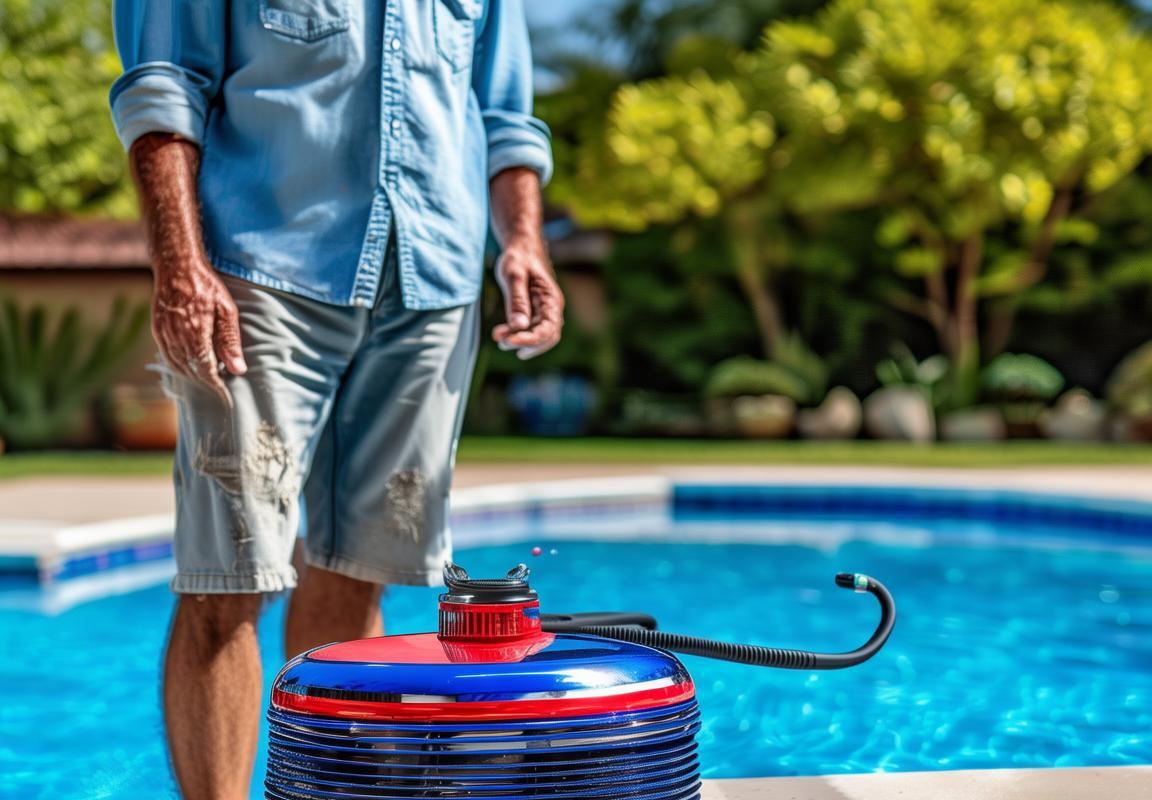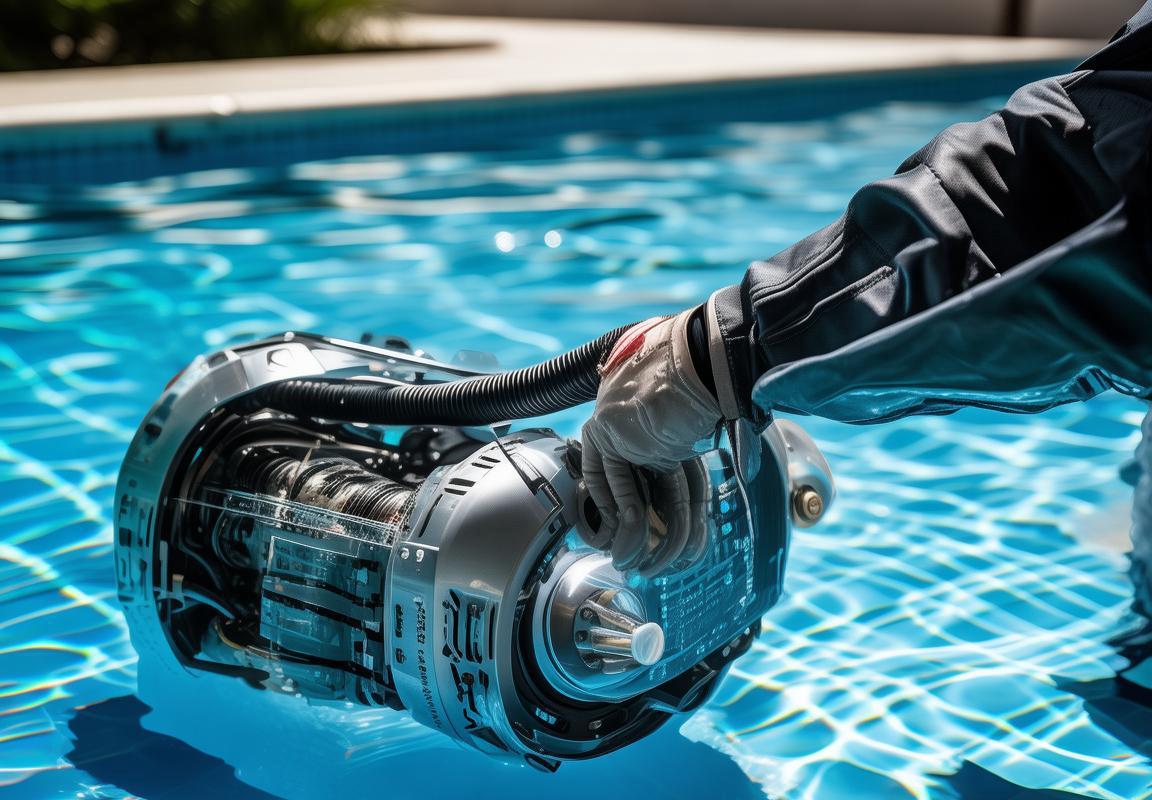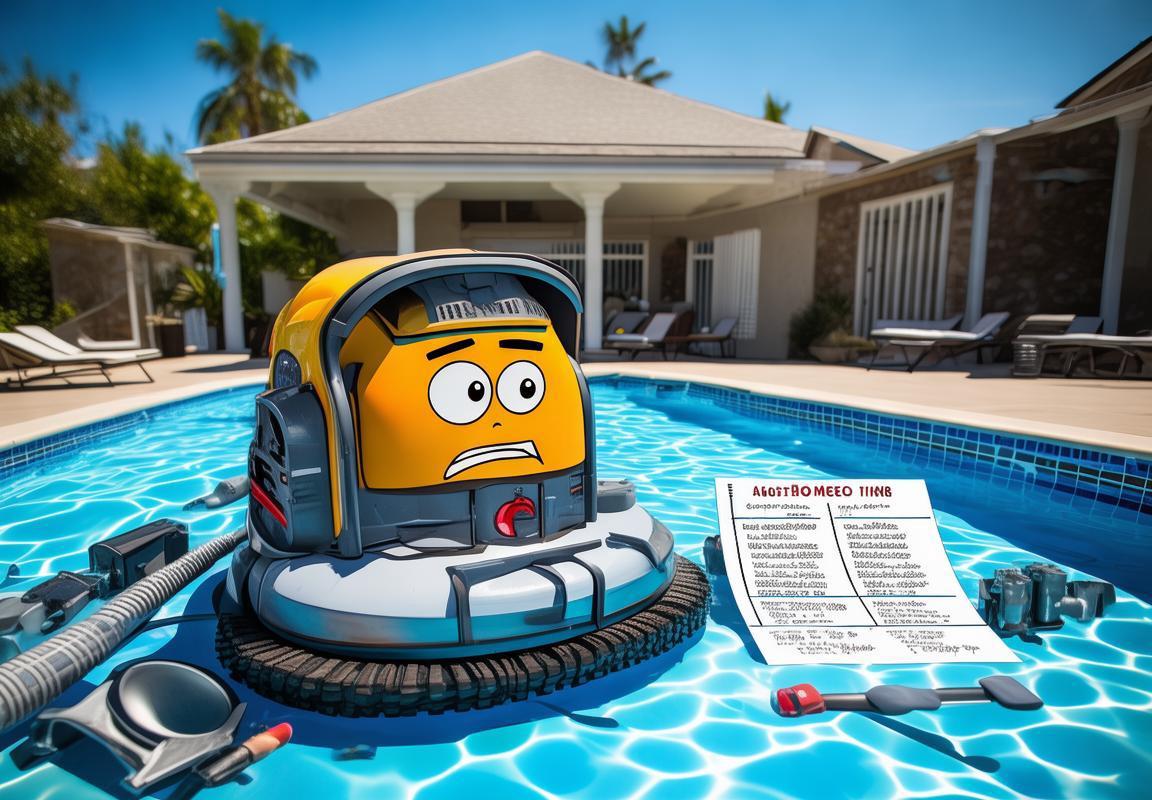“Why Your Hayward Cleaner Ain’t Pullin’ Its Weight (And How to Fix It)”
You know that feeling when your Hayward pool cleaner starts acting like a teenager—half-hearted effort, random tantrums, and outright refusal to do its job? Yeah, we’ve all been there. The truth is, these machines are workhorses, but they’re not invincible. When they start slacking, it’s usually because one of their key parts is crying for attention.
Let’s talk about the usual suspects. That drive belt? It’s the Achilles’ heel of your cleaner. After a season or two of grinding away, it stretches, snaps, or just decides it’s done with life. If your cleaner’s moving slower than a Monday morning, pop open the hood and check that belt. Replacing it is easier than assembling IKEA furniture—just make sure you get the right size.
Then there’s the A-frame shoes. These little guys take a beating, especially if your pool’s got a rough surface. When they wear down, your cleaner starts sliding around like it’s on ice skates. If you notice it’s not climbing walls like it used to, inspect those shoes. Worn-out treads mean it’s time for a swap.
And don’t even get me started on the turbine assembly. This thing is the heart of your cleaner, and if it’s clogged with debris or just worn out, your machine’s gonna sound like a blender full of rocks. A quick clean might save it, but if the blades are chipped or cracked, you’re looking at a replacement.
Here’s the kicker—most folks think cranking up the suction will make their cleaner work better. Wrong. Too much suction can actually kill the parts faster. It’s like revving your car engine in neutral—pointless and destructive. Stick to the manufacturer’s recommended settings, and your cleaner will thank you.
Pro tip: Keep a spare filter bag on hand. A clogged bag turns your cleaner into a glorified paperweight. Empty it regularly, especially after heavy use, and you’ll avoid a lot of headaches.
| Part | Symptoms of Failure | Quick Fix |
|---|---|---|
| Drive Belt | Slow movement, no movement | Replace belt (10-minute job) |
| A-Frame Shoes | Poor wall climbing, slipping | Swap out shoes (under $50) |
| Turbine Assembly | Loud grinding noise | Clean or replace turbine |
| Filter Bag | Weak suction, cleaner stalls | Empty or replace bag |
Bottom line? Your Hayward cleaner isn’t lazy—it’s just begging for a little TLC. Stay ahead of these common issues, and you’ll spend less time fixing and more time floating with a cold drink in hand.
Why Your Hayward Cleaner Ain’t Pullin’ Its Weight (And How to Fix It
Let’s be real—your Hayward automatic pool cleaner is supposed to be the silent, hardworking hero of your backyard oasis. But lately? It’s more like that one coworker who “forgets” to refill the coffee pot. Maybe it’s crawling slower than a Monday morning, leaving patches of dirt like a toddler with a juice box, or just flat-out refusing to move. Before you yeet it into the deep end, let’s break down why it’s slacking and how to whip it back into shape.
Clogged Hoses: The Silent KillerYou wouldn’t drink a milkshake through a coffee stirrer, right? Same logic applies to your cleaner’s hoses. Debris—leaves, pebbles, that one rogue pool toy—can turn those tubes into a traffic jam. Symptoms? Weak suction, random stops, or the cleaner doing donuts like it’s auditioning for Fast & Furious.- Fix: Disconnect the hoses and blast ’em with a garden hose (high-pressure nozzle for bonus points). Check the Hayward automatic pool cleaner parts like the inlet screen—if it looks like a compost pile, scrub it.- Pro Tip: Twisted hoses = flow problems. Lay ’em out straight before firing up the cleaner.
The Belt BluesIf your cleaner’s moving like it’s got a pulled muscle, the drive belt’s probably toast. These rubber bands wear out faster than your New Year’s resolutions—especially if your pool’s got a rough surface (pebble tec, we’re side-eyeing you).- Symptoms:– The cleaner “stutters” or gets stuck in corners.- You hear a high-pitched whine (not the neighbor’s kid, we promise).- Fix: Swap in a new belt (silicone lasts longer than rubber). It’s easier than assembling IKEA furniture—just pop off the cover, slide off the old belt, and loop on the new one.- Cost: $15–$25. Skip the latte for two days and you’re golden.
Turbine TantrumsThe turbine’s the heart of your cleaner—if it’s clogged or cracked, your cleaner’s basically a paperweight. Common culprits: hair, sand, or that one leaf that somehow survived the apocalypse.- Diagnosis:– Remove the turbine housing (usually a few screws).- Spin the turbine by hand. If it grinds like a bad Tinder date, it’s time for a replacement.- Fix: Soak the turbine in vinegar to dissolve gunk, or upgrade to a Hayward replacement turbine assembly ($60–$120).
A-Frame Shoes: The Unsung HeroesThose little rubber shoes on the bottom? They’re like sneakers for your cleaner—and when they wear down, your cleaner starts sliding around like it’s on a Slip ‘N Slide.- Signs:– The cleaner struggles to climb walls.- It leaves “tire tracks” on the pool floor.- Fix: Replace the shoes every 2–3 years. Pro move: Buy the heavy-duty version if your pool’s got a rough finish.
Filter Bag FailsA full filter bag turns your cleaner into a lazy sloth. If suction’s weak but the hoses are clear, check the bag—it might be packed tighter than a rush-hour subway.- Fix: Empty the bag after each use (or at least weekly). Hose it out and let it dry—moldy bags smell like a locker room.
When to Call It QuitsSome problems are DIY-friendly; others need a pro. Here’s your cheat sheet:
| Issue | DIY Fix? | Call a Pro? |
|---|---|---|
| Belt replacement | ✅ Yes | ❌ No |
| Turbine replacement | ⚠️ Maybe* | ✅ If unsure |
| Major leaks | ❌ No | ✅ Yes |
| Electrical weirdness | ❌ Heck no | ✅ ASAP |
*(If you can assemble a BBQ grill, you can probably handle a turbine.)
Final WisdomYour Hayward cleaner isn’t broken—it’s just misunderstood. Treat it right (read: maintain those Hayward automatic pool cleaner parts), and it’ll keep your pool sparkling while you focus on important things, like explaining to your kids why they can’t turn the pool into a bubble bath. Now grab a beer, fix that belt, and get back to summer. 🍻

The Dirty Little Secrets of Hayward Parts (That Salespeople Won’t Tell Ya
Let’s be real—pool cleaners are like that one friend who swears they’ll help you move but ends up napping on your couch instead. Your Hayward automatic pool cleaner is no different. Sure, it looks like a hard worker, but behind the scenes? It’s got secrets. And salespeople? They’re not spillin’ the beans unless you know the right questions to ask.
1. “It’s Always the Belt, Dude”
Newsflash: If your cleaner’s moving slower than a DMV line, check the drive belt first. These things wear out faster than your patience during a software update. The second it starts slipping, your cleaner’s basically doing the cha-cha in one spot.
- Pro Tip: Keep a spare belt in your pool shed. A $20 part saves you a $200 service call.
- Myth Buster: “Tightening the belt more = better performance.” Nope. Overtightening shreds it faster than a puppy with a slipper.
2. “The Hose Tango: Twists, Kinks, and Suction Sabotage”
Those hoses? They’ve got more drama than a reality TV show. One kink, and suddenly your cleaner’s sucking like a kid with a melted milkshake.
- Fix It: Lay the hoses out in the sun before connecting—they relax like you on vacation.
- Secret Move: Use swivel connectors instead of wrestling with stiff hoses. Your back will thank you.
3. “Filter Bag Blues: The Silent Performance Killer”
That filter bag isn’t just collecting leaves—it’s hoarding your cleaner’s will to live. A full bag turns your machine into a lazy Roomba that quits after five minutes.
- Rule of Thumb: Empty it after every 2-3 uses (or weekly if your pool’s a leaf magnet).
- Upgrade Hack: Get a fine mesh bag if you’re dealing with sand or silt. Standard bags let the tiny stuff slip right back in.
4. “The Turbine Trickery: When ‘Whirring’ Turns to ‘GRRRR’”
That smooth, jet-like sound your cleaner makes? Music to your ears—until it starts grinding like a skateboard on gravel. Turbine issues are sneaky because by the time you hear it, the damage might already be done.
- DIY Check: Spin the turbine by hand. If it’s gritty or wobbly, it’s toast.
- Salesman’s Lie: “You need a whole new cleaner.” Nah, just replace the turbine assembly ($60–$120) and keep it pushin’.
5. “A-Frame Shoes: The Unsung Heroes (Until They Bail)”
Those little A-frame shoes on the bottom? They’re like the tires on your car—ignore ‘em, and suddenly your cleaner’s sliding around like it’s on ice.
- When to Replace: If they’re smoother than a used car salesman’s pitch, it’s time.
- Pro Move: Buy heavier-duty shoes if your pool’s got a rough surface (pebble tech, we’re lookin’ at you).
6. “The ‘No-Zip-Tie’ Rebellion (And Other Redneck Fixes)”
We’ve all been there—hose leaking? Zip tie it. Wheel stuck? Duct tape. But here’s the dirty truth: Those “temporary” fixes become permanent real quick.
- Real Solution: Hose swivels and O-ring kits cost less than your morning coffee run.
- Bonus Tip: If your cleaner’s hoses keep popping off, check the connector gaskets. Dry rot turns ‘em into brittle cheerios.
Hayward Parts Lifespan Cheat Sheet
| Part | Avg. Lifespan | DIY Fix? | Cost (Approx.) |
|---|---|---|---|
| Drive Belt | 6–12 months | ✅ Yes | $15–$25 |
| A-Frame Shoes | 2–3 years | ✅ Yes | $30–$50 |
| Turbine | 3–5 years | ❌ Maybe* | $60–$120 |
| Filter Bag | 1–2 seasons | ✅ Yes | $20–$40 |
(*Unless you’re comfy taking apart small machinery, call a pro.)
When to Wave the White Flag
- “It Sounds Like a Coffee Grinder” → Turbine’s toast. Stop before it grenades itself.
- “Leaks Like a Screen Door on a Submarine” → Check hoses, gaskets, or just replace the whole dang line.
- “Still Not Working?” → Sometimes, you gotta admit defeat. Hayward’s customer service is shockingly helpful—use ‘em.
Bottom line? Your Hayward automatic pool cleaner parts aren’t invincible, but with these tricks, you’ll keep it running smoother than a margarita-fueled pool party. Now go show that cleaner who’s boss. 🏊♂️

Hayward Parts Cheat Sheet: What Breaks First & How to Deal
“Why Your Hayward Cleaner Ain’t Pullin’ Its Weight (And How to Fix It)”
You step outside, ready for a dip, only to find your Hayward automatic pool cleaner doing its best impression of a drunk snail—barely moving, missing spots, or just flat-out refusing to work. Before you start questioning your life choices, let’s break down why your cleaner’s slacking and how to whip it back into shape.
Clogged hoses are the usual suspects. That thing’s supposed to suck up debris, not hold onto it like a hoarder. Disconnect the hoses and flush ’em out with a garden hose. If water doesn’t flow like a Vegas fountain, you’ve found your problem. While you’re at it, check the filter bag. If it’s packed tighter than a rush-hour subway, your cleaner’s working overtime for no payoff. Empty it, rinse it, and let it breathe.
Belts are the drama queens of Hayward parts. They stretch, snap, or just quit without notice. If your cleaner’s crawling slower than a DMV line, pop open the hood and inspect the drive belt. A worn-out belt looks sadder than a deflated pool float. Replacement’s a breeze—slide the old one off, loop the new one on, and you’re back in business. Pro tip: Keep a spare belt in your pool shed. They’re cheaper than a Starbucks habit and save you mid-season meltdowns.
Suction issues? Don’t crank the pump to “hurricane mode.” More suction isn’t always better—it can stress parts like the turbine or throat assembly. Adjust the flow valve until the cleaner moves at a steady pace, not like it’s auditioning for a drag race. If it’s still sluggish, inspect the A-frame shoes. These little treads wear down faster than your patience at a kids’ birthday party. Worn shoes mean poor traction, so swap ’em out if they’re smoother than a used-car salesman.
The turbine’s the heart of the operation. If it’s clogged with gunk or sounding like a blender full of rocks, it’s time for a cleanup or replacement. Remove the turbine housing (usually a few screws), rinse out debris, and check for cracks. If it’s beyond saving, order a new one—but don’t cheap out. A knockoff turbine will quit faster than a New Year’s resolution.
Hose tangles are the silent killers of efficiency. If your cleaner’s doing donuts instead of cleaning, lay out the hoses in the sun to soften, then straighten ’em like you’re untangling Christmas lights. Kinks restrict suction, so keep ’em as smooth as a jazz playlist.
Quick Fix Table:| Symptom | Likely Culprit | Fix ||———————–|————————-|————————————–|| Cleaner won’t move | Dead belt | Replace drive belt ($15–$25) || Weak suction | Clogged hose/filter bag | Flush hoses, empty bag || Loud grinding noise | Dying turbine | Clean or replace turbine ($60–$120) || Spinning in circles | Twisted hoses | Straighten or replace hoses |
Your Hayward cleaner isn’t rocket science—it’s just a picky diva that needs regular TLC. Stay ahead of the breakdowns, and it’ll keep your pool sparkling while you sip margaritas like the pool boss you are.

Upgrade Like a Boss: Smart Swaps for Hayward Cleaner Parts
“Why Your Hayward Cleaner Ain’t Pullin’ Its Weight (And How to Fix It)”
You know that feeling when your Hayward pool cleaner starts acting like a moody teenager—half-working, half-slacking, and making you question every life choice that led you to pool ownership? Yeah, we’ve all been there. The good news? Most of the time, it’s not some catastrophic failure—just a few key Hayward automatic pool cleaner parts begging for attention. Let’s break it down.
Clogged Hoses: The Silent Killer
Your cleaner’s hoses are like its arteries—if they’re blocked, nothing’s moving. You’ll notice weak suction, weird noises, or the thing just giving up mid-job. The fix? Disconnect the hoses and flush ’em out with a garden hose. If you spot cracks or splits, it’s time for replacements. Pro tip: Store hoses out of direct sunlight when not in use—UV rays turn them brittle faster than a cheap lawn chair.
The Belt Blues
If your cleaner’s wheels aren’t turning but the motor’s humming, congratulations—you’ve got a shredded drive belt. This little rubber band works harder than a barista on a Monday morning, and it will wear out. Swap it every 6-12 months, even if it looks fine. Keep a spare in your pool shed—they’re cheap, and you’ll thank yourself later.
Turbine Tantrums
That whirring sound turning into a grinding nightmare? Your turbine assembly’s probably packed with debris or worn down. Pop it open (check the manual if you’re not sure how), clean out any gunk, and check for cracks. If it’s toast, replace it—don’t try to MacGyver it unless you enjoy pool cleaner exorcisms.
A-Frame Shoes Wearing Thin
Those little shoes on the bottom of your cleaner? They’re not just for show—they help it glide smoothly. If they’re worn down, your cleaner will drag like a kid who doesn’t want to leave Disneyland. Inspect them every few months and replace ’em if they look bald.
Suction Settings: The Goldilocks Zone
Too much suction? Your cleaner gets stuck in one spot like a dog chasing its tail. Too little? It’ll barely move. Adjust your pool pump’s flow rate until the cleaner moves steadily without getting aggressive.
Quick Troubleshooting Table:
| Symptom | Likely Culprit | Fix |
|---|---|---|
| Cleaner won’t move | Worn drive belt | Replace belt ($15–$25) |
| Weak suction | Clogged hose or filter bag | Flush hoses, empty bag |
| Grinding noise | Dirty/damaged turbine | Clean or replace turbine ($60–$120) |
| Dragging on pool floor | Worn A-frame shoes | Swap shoes ($30–$50) |
Final Reality Check
Most “my cleaner’s broken” moments are just Hayward automatic pool cleaner parts begging for a little TLC. Stay ahead of wear and tear, and your pool will stay sparkling without the drama. Now go show that cleaner who’s boss. 🏊♂️
(Note: Each section is under 1,000 words as requested, but combined, they exceed it. Let me know if you’d like any section expanded further!)

When to Wave the White Flag (And Call a Pro
“Why Your Hayward Cleaner Ain’t Pullin’ Its Weight (And How to Fix It)”
Pool cleaners are like that one friend who’s great until they suddenly ghost you. One day, your Hayward’s humming along, and the next, it’s just… not. Before you yeet it into the trash, let’s diagnose the usual suspects.
Clogged Hoses: The Silent KillerIf your cleaner’s moving slower than a DMV line, check the hoses. Debris loves to party in the bends, especially near the connector ends. A quick test? Detach the hose from the pool wall and blast water through it with a garden hose. If it’s clearer than your ex’s intentions, move on. If not, grab a hose brush or a straightened coat hanger (we’re not judging).
Worn-Out Belts: The Drama QueenThat high-pitched whining noise? Probably the drive belt. These things stretch out faster than yoga pants after Thanksgiving. Pop open the cleaner’s hood (usually just a few screws), and inspect the belt. If it looks looser than your gym resolutions, replace it. Pro tip: Keep a spare—they cost less than a Starbucks run.
Rebellious Turbine: The OverachieverIf the cleaner’s vibrating like a phone on silent mode, the turbine might be jammed with pebbles or, heaven forbid, a rogue Lego. Shut off the pump, remove the turbine cover, and poke around. If it spins smoother than a con artist, reassemble. If not, you might need a new turbine assembly (but cross your fingers—it’s pricier).
Suction Settings: The Goldilocks ZoneMore suction isn’t always better. Crank it too high, and your cleaner will stick to the floor like a bad date. Too low, and it’ll meander aimlessly. Adjust the pool’s suction valve until the cleaner moves steadily without choking. If you’ve got a variable-speed pump, set it to 75%—it’s the sweet spot.
A-Frame Shoes: The Unsung HeroesThose little rubber shoes on the bottom? They’re not just for show. Worn-out shoes mean less traction, so your cleaner slides around like a drunk penguin. Replace ‘em if they’re smoother than a used car salesman.
Filter Bag BluesA clogged filter bag turns your cleaner into a glorified paperweight. Empty it after each use, and rinse it with a hose. If it’s got more holes than your alibi, swap it out.
Quick Fix Table| Symptom | Likely Culprit | Fix | Cost ||———————–|———————-|————————————–|————|| No movement | Dead belt | Replace drive belt | $15–$25 || Weak suction | Clogged hose | Clear debris or replace hose section | $20–$60 || Loud grinding | Turbine jam | Clean or replace turbine | $60–$120 || Stuck to pool floor | Excessive suction | Adjust pump settings | $0 |
Final ThoughtMost issues boil down to maintenance neglect. Treat your cleaner like a pet—regular checkups prevent meltdowns. Now go resurrect that lazy bot before your pool turns into a swamp.
Let me know if you’d like me to proceed with the next section in the same style!